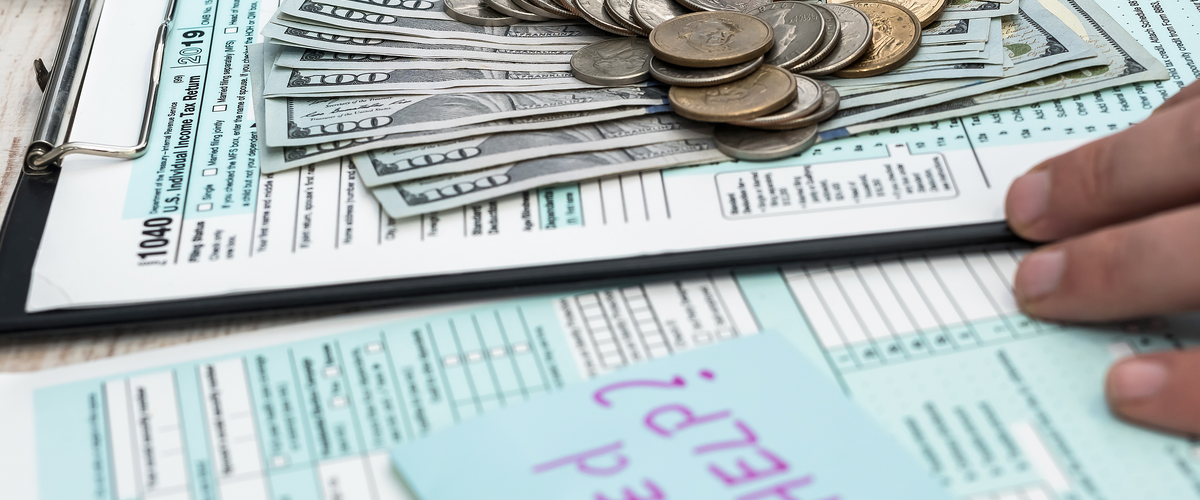

2020 Tax Guide: Info you Need
How ToReviewsxPickYour Money January 12, 2021 Kristian Wilson

The 2020 tax season is almost upon us and many are already taking a look at the steps they need to take to be prepared and ready to go. With all of the changes that happened to the world in 2020, it is normal to have a few questions about how your taxes will do and what changes you should be on the lookout for. In this article, we will spend some time exploring your taxes and what you can expect when you file them this year.
Changes to the 2020 Taxes
When you go to file this year, be ready for a few major changes to take place. The IRS is preparing for an influx of individuals who have some drastic changes in their taxes due to unexpected unemployment and more. Some of the different things to expect this tax season include:
The Stimulus Payment
Many individuals and families received a stimulus payment earlier this year as part of the CARES Act. This is not going to negatively affect your taxes at all. It is an advance refundable tax credit. This means that no matter what you owe, or don’t owe, when you are done filing your tax return, you will still get to keep that money and you will not be taxed on it at all.
This is good news for many families. You will not need to worry about paying taxes on that money. And you will not have to pay it back now that the year has ended. If you were within the income guidelines put forth for that rebate, then that money is yours and it will not affect what you will or will not pay in taxes, even if you end up earning more in 2020 than you did in 2018 and 2019, which is what the rebate was based on.
Deductions
The types of deductions, and the amount you can deduct on your tax return will be a little bit different in 2020 too. The standard deduction when we look at a tax return for someone married filing jointly will rise up to $24,800 this year. For married individuals who will file separately and single taxpayers, this deduction will increase to $12,400.
There are also a few changes to the AMT exemption, or the alternative minimum tax exemption. The amount for those who file as single will be $72,900 and it phases out at $518,400. For those who are married and file together, this exemption will be at $113,400 and will phase out at $1,036,800.
Taxpayers will notice some differences with the CARES Act too. Due to the language in this act, you can have $300 above the line deductions for any of the cash contributions you give to charity if you stick with the standard deduction this year. In addition to those, those who itemize will be able to lift the 60% AGI limitation on the amount you contribute in cash. Keep in mind with this that any donor-advised funds and the organizations that are supported by it can’t qualify for this.
The Tax Brackets
Every year it is important to take a look at some of the tax brackets and figure out where you fall in them. This will determine how much you will end up paying in taxes at the end of the year. For 2020 and 2021, the top tax bracket will be at 37%. This is the rate for individual taxpayers when they file as single if they have an income higher than $518,400 in 2020. The income amount limit will be higher in 2021.
For married couples, the 37% will not go into affected until they earn $622,050 when filing jointly and $311,025 when filing separately. Some of the tax brackets to consider include:
35% for those who are single or married filing single who earn more than $207,350 for the year. This tax bracket is $414,700 for those married filing jointly.
32% for married filing single and single taxpayers who earn more than $163,300 in 2020. This tax rate starts at the income of $326,600 for taxpayers you are married and filing jointly.
24% for married filing single and single taxpayers when they earn more than $85,525. For taxpayers who are married and filing jointly, this tax rate happens when you reach the income level of $172,750.
22% for single filers will start when they reach an income level of $40,125. This is the tax rate for those filing married and jointly at $80,250.
12% starts for single taxpayers when they earn more Than $9875 in 202. The rate is put into affect at the income of $19,900 for married filing jointly.
There is a tax bracket of 10%, but this is for those who earn less than $9875 a year as a single taxpayer. For married individuals, this will be the tax amount when they earn less than $19,750 in the year.
If you are uncertain about your tax bracket, then it is important to talk with a tax professional ahead of time. Keep in mind that if you have some deductions in place, you may be able to lower the amount that you owe and put yourself in a lower tax bracket. This will save you a lot of time and money in the process.
Your Retirement
The IRS has made some changes to how your retirement withdrawals are handled this year as well. To start are the contribution limits. These limits for any employee who participates in an employer retirement plan is increased to $19,500 in 2020. It was $19,000 in the past. For individuals who are age 50 and older who want to do a catch-up contribution, the limit has increased to $6500.
As a taxpayer, you are able to deduct some of the contributions you make to a traditional IRA if you meet some conditions. There are some phase-out times depending on how much you make, but all of the limits for this phasing out have been increased based on inflation.
The biggest changes here though are on the withdrawals that you can take on these. If you qualified for any coronavirus-related distributions from the retirement, you will not need to pay for the 10% penalty for withdrawing it early. The distribution is taxable but you can also spread the taxes on that out between three years rather than having it due the entire year that you take it out. If you pay the funds back to the plan within that three year timeframe, it is a rollover and you will not be taxed.
Because of Covid-19 and many people needing financial help, you are able to also take a loan out of your employer-sponsored retirement plan, up to the full amount or $100,000 depending on which one is smaller. You can then delay the payments on that amount for a year without having to pay anything on it. If you have a loan outstanding on that retirement plan, then you can defer it for a year if necessary.
Credits
In the 2020 tax year, the maximum earned income credit is at $6,660 for taxpayers who have three or more children who qualify. In addition, the MAGI amount used by those who are married and file jointly to determine the reduction of the lifetime earning credit will be at $118,000 and phases out completely at $138,000.
Estates and Gifts
Even the estates and gifts for this year will change. Estates of decedents who die during the 2020 year will have a basic exclusion amount of $11.58 million this year. The annual exclusions for gifts is $15,000, which is the same as it was in 2019.
Tax Services to Use
You do not need to file your taxes on your own. In fact, many individuals find that going in-person or using an online tax filing company makes the whole process that much easier. There are a number of different online tax services that you can use, each with varying costs depending on what type of filing you need to do. For example, if you are just filing for yourself and one job, you may be able to file for free. If you have a business, a house, student loan debt, and other factors, you may need to use one of the services that costs a bit more.
Some of the best tax service companies to consider using this tax season include:
TurboTax
TurboTax allows you to be in the driver seat of your taxes, making it easy to choose the level of help that you want. You can go through and file your taxes all on your own. Or you can use their live tax experts to walk you through every step of the process. They also will go through the whole return before you file to make sure nothing is missed.
There are a few different plans you can pick out depending on your unique situation through TurboTax. Some of these include:
The Free Edition: This one doesn’t cost anything but it is only for a very simple tax return. If there is anything special with your taxes, you will have to pay more.
Deluxe: This would be the option you would need to use if you are married filing together, if you have children, or for any other special situations. It is the most popular option and costs about $60. The state return will cost extra.
Premier: This option is the best one to choose if you have rental property or investments that you need to claim on your return. It costs about $90 for the federal return.
Self-employed: If you run your own business or do any freelance work, then the self-employed is the best option. It will run about $120 for the free version.
H&R Block
H&R Block is another great company to use to help you handle your taxes at the end of the year. They provide a lot of one on one service and can be a great option for those who have no idea how to handle their taxes at all. You will need to set up an appointment to work with them ahead of time because of the pandemic, but this company has always been one you can trust.
The amount you will pay for filing with H&R Block will depend on the type of tax return and how much work needs to go into it. The average fee is $147 for each return. This is before you add in itemized deductions to the mix. If you add these, a business, and other options, it is often more expensive to complete.
1040EZ
If you have a simple return and can handle your taxes on your own, it is possible to visit the IRS website and do all of the work on your own. This will save you a lot of money. The IRS has a ton of forms that will work for each situation you need during tax time. You just need to know enough about your taxes to handle it and not make mistakes. But if you can do this option, it is completely free to file the taxes.
TaxAct
This option may not be as well-known as some of the other options, but it is a great way to handle your taxes and make sure you get the refund you want. They offer some free options if you have simple taxes, which can make them a great place to start. You can even start your return for free and they will let you know if you need one of the other plans based on how you answer questions as you go along.
TaxAct offers a few different plans based on your tax needs. Some of them include:
- Free: This one will be great for simple filers and will not cost anything.
- Deluxe: This is the most popular plan and is the one you most likely will need to use. It works for any deductions, homeowners, and so on. The cost is $25 to file.
- Premier: This is a great option to use for foreign bank accounts, rental properties, and investments. The cost is $34.95.
- Self-Employed: If you run your own business, then you will need to use this option. It will help you to get the most out of your return each year and costs $65.
Conclusion
Tax season is always a little bit stressful. You have to keep track of all the money you earned and all the special situations that come with it. Then you need to learn any rules and changes in laws that may have come up over that time as well. By looking through this article and understanding more about the recent tax changes, you will be able to accurately file your taxes with ease this year.










